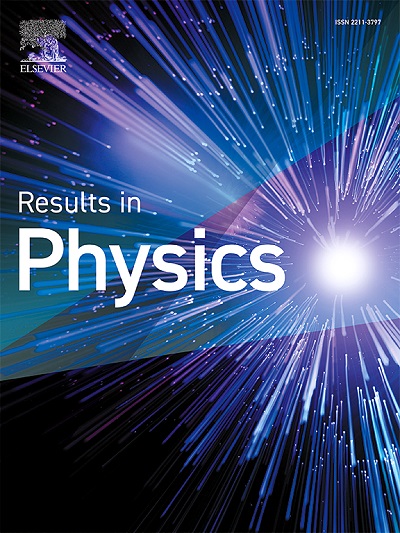Post-ball-milling-assisted solid-state synthesis of Bi4O4SeCl2: A low thermal conductivity material
IF 4.4
2区 物理与天体物理
Q2 MATERIALS SCIENCE, MULTIDISCIPLINARY
引用次数: 0
Abstract
This study investigates the synthesis of Bi4O4SeCl2 through a cost-effective ball-milling-assisted solid-state reaction method. The as-grown samples predominantly consisted of the Bi12O15Cl6 phase, with minor contributions from BiOCl and Bi4O4SeCl2. A systematic post-ball-milling process was applied to enhance the formation of the Bi4O4SeCl2 phase. Prolonged milling time led to the progressive dominance of the Bi4O4SeCl2 phase, resulting in significant improvements in electrical conductivity and reductions in thermal conductivity. After 30 min of milling, the carrier concentration increased notably from −2.23 × 1016 cm−3 (as-grown) to −1.01 × 1018 cm−3, while electrical conductivity rose from 0.14 S/cm (as-grown) to 2.26 S/cm. Simultaneously, thermal conductivity decreased from 0.65 W m−1 K−1 (as-grown) to 0.35 W m−1 K−1. These findings demonstrate that post-ball-milling is a scalable and economical method for synthesizing Bi4O4SeCl2 with low thermal conductivity, highlighting its potential as a promising material for thermal barrier coatings and thermoelectric applications.
求助全文
约1分钟内获得全文
求助全文
来源期刊

Results in Physics
MATERIALS SCIENCE, MULTIDISCIPLINARYPHYSIC-PHYSICS, MULTIDISCIPLINARY
CiteScore
8.70
自引率
9.40%
发文量
754
审稿时长
50 days
期刊介绍:
Results in Physics is an open access journal offering authors the opportunity to publish in all fundamental and interdisciplinary areas of physics, materials science, and applied physics. Papers of a theoretical, computational, and experimental nature are all welcome. Results in Physics accepts papers that are scientifically sound, technically correct and provide valuable new knowledge to the physics community. Topics such as three-dimensional flow and magnetohydrodynamics are not within the scope of Results in Physics.
Results in Physics welcomes three types of papers:
1. Full research papers
2. Microarticles: very short papers, no longer than two pages. They may consist of a single, but well-described piece of information, such as:
- Data and/or a plot plus a description
- Description of a new method or instrumentation
- Negative results
- Concept or design study
3. Letters to the Editor: Letters discussing a recent article published in Results in Physics are welcome. These are objective, constructive, or educational critiques of papers published in Results in Physics. Accepted letters will be sent to the author of the original paper for a response. Each letter and response is published together. Letters should be received within 8 weeks of the article''s publication. They should not exceed 750 words of text and 10 references.
 求助内容:
求助内容: 应助结果提醒方式:
应助结果提醒方式:


